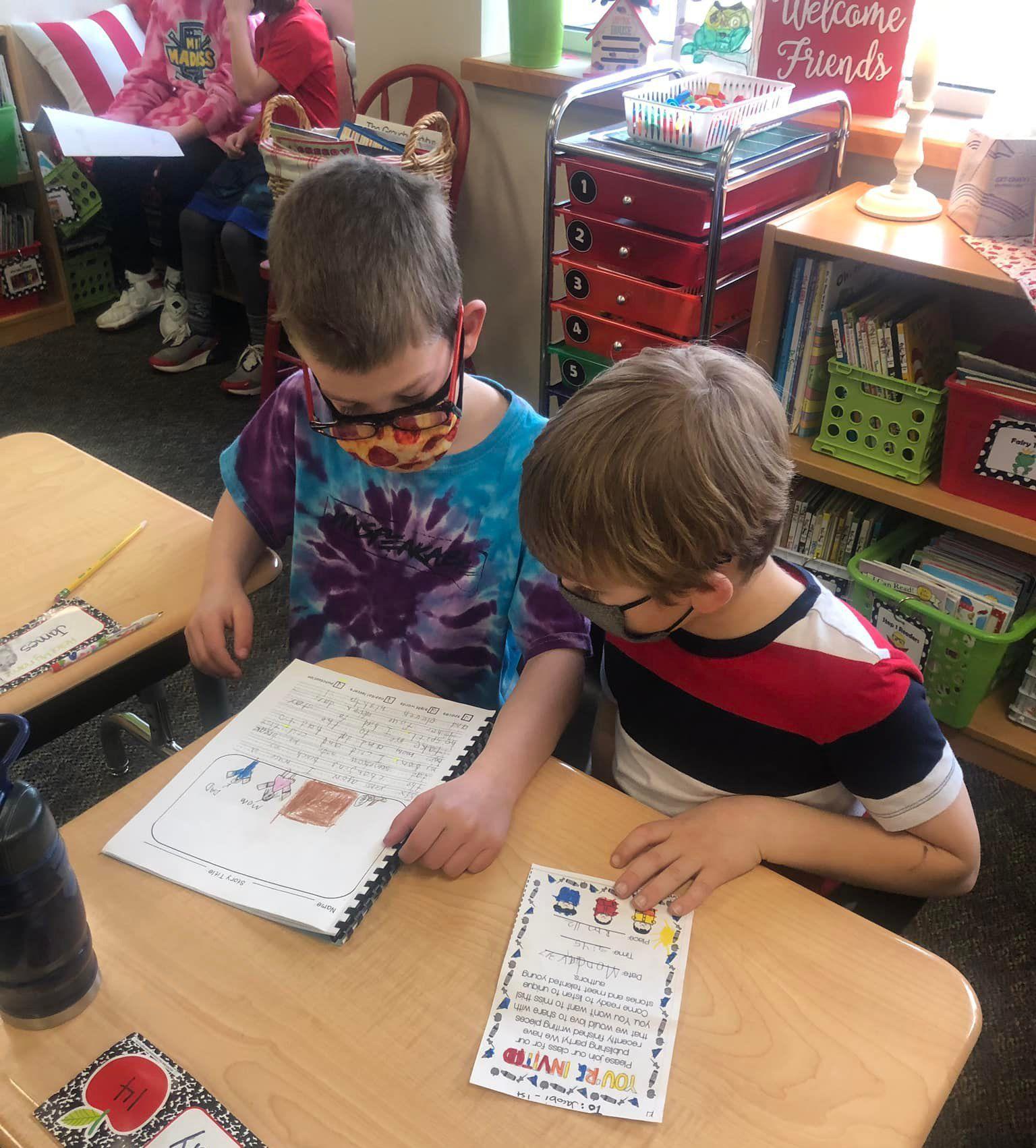1st Grade
Mathematics:
In grade one, students will work with whole numbers and place value—including grouping numbers into tens and ones as they learn to add and subtract up through 20. Students will also use charts, tables, and diagrams to solve problems. Activities in these areas will include:
- Quickly and accurately adding numbers together that total up to 10 or less and subtracting from numbers up through 10
- Understanding the rules of addition and subtraction (for example, 5+2=2+5)
- Solving word problems that involve adding or subtracting numbers up through 20
- Understanding what the different digits mean in two-digit numbers (place value)
- Comparing two-digit numbers using the symbols > (more than), = (equal to) , and < (less than)
- Understanding the meaning of the equal sign (=) and determining if statements involving addition and subtraction are true or false (for example, which of the following statements are true? 3+3=6, 4+1=5+2)
- Adding one- and two-digit numbers together
- Measuring the lengths of objects using a shorter object as a unit of length
- Putting objects in order from longest to shortest or shortest to longest
- Organizing objects into categories and comparing the number of objects in different categories
- Dividing circles and rectangles into halves and quarters
Math Information & Resources
- Parent Roadmap - Supporting your child in 1st grade Mathematics
- CCSS Focus for 1st Grade Mathematics
- K-5 Math Curriculum - Bridges in Mathematics
- Home Learning Resources - Math at Home
English Language Arts:
In grade one, your child will build important reading, writing, speaking, and listening skills. Students will continue to learn the letters and sounds that make up words. They will think, talk, and write about what they read in stories, articles, and other sources of information. In their writing, students will work on putting together clear sentences on a range of topics using a growing vocabulary. Activities in these areas will include:
- Reading stories and showing they understand the lesson or moral of the story
- Asking and answering questions about a story, including characters, settings, and major events
- Comparing and contrasting the experiences of different characters
- Identifying the reasons an author gives to support a point
- Explaining differences between texts that tell stories and texts that provide information
- Learning and using new words
- Participating in class discussions by listening, responding to what others are saying, and asking questions
- Describing people, places, things, and events, expressing feelings and ideas clearly
- Learning basic rules of spoken and written English
- Working with others to gather facts and information on a topic
- Writing to describe an event, provide information on a topic, or share an opinion
Language Arts Information & Resources
